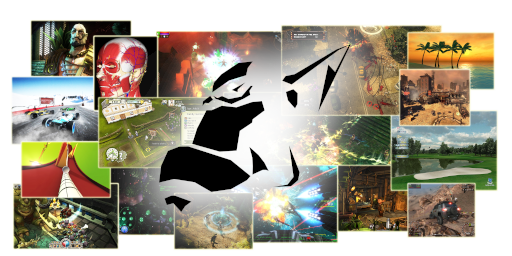Since 2001, OGRE has grown to become one of the most popular open-source graphics rendering engines, and has been used in a large number of production projects, in such diverse areas as games, simulators, educational software, interactive art, scientific visualisation, and others.

News
Ogre-Next 3.0.0 Eris released
It's been 2 years since 2.3.0 and almost a year since the last 2.3.x release. It's about time for 3.0.0! Ogre to OgreNext name migration We're trying to make OgreNext and Ogre able to be installed side-by-side. The details can be found in the manual.But the short...
Ogre 14.3 released
Ogre 14.3.0 was just released. This release contains some significant bug-fixes and feature additions, which we will discuss in more detail below. We recommend all users of the 14.x branch to update. For a full overview of the changes, see the changelog. 3D Gaussian...
Ogre ecosystem roundup #9
After the last ecosystem updates were part of the release announcements, we pick up the tradition of making a dedicated post about what is going on around Ogre. Ogre 14.2.6 release The Ogre 14.2 release got 6th point release which is fully binary compatible with...
Cross Platform and Cross Language
OGRE supports Windows (all major versions), Linux, OSX, Android, iOS, Javascript (via EMScripten), and WinRT. Also, OGRE was ported to PS3 and Xbox360 for several titles.
Furthermore, OGRE comes with Bindings for Python, Java and C# out of the box to account for different coding needs.
Open source (MIT License)
Ogre is released under the MIT License, which is a permissive open source license. The only condition is that you distribute the license text included in our distribution with any software that uses OGRE.
Documentation
Learn OGRE using our series of introducatary Tutorials. Of course the OGRE team provides official documentation in form of the OGRE Manual and API documentation.
Support and community
There are several support resources that you will want to consult when you have a problem:
Forums – The primary support mechanism as the forums are populated with a large number of experienced users who are always happy to help.
Gitter – We have an channel on gitter.
Wiki – This is a repository of tutorials and reference knowledge which you should definitely consult if you need a hint.
Testimonials
Here’s a few examples of what people have been saying about OGRE:
Those three characteristics make me choose it and so far, after almost a year and a half, I have never regretted that decision. Ogre3D has helped us a lot by speeding up the prototyping phase, testing new techniques for the physics algorithms really quickly, and, as part of my Argo Engine, serving really well as the presentation module.”
When we looked at Ogre the bar was instantly raised, it easily fulfilled all our criteria and more. The clean, extensible, object oriented architecture was well suited to our needs. Some open source projects often consist of cryptic, un-maintainable, spaghetti code. The thing I like most about Ogre, is that I do not feel compelled to have a shower every time I touch the code.
In addition, creating the scripts for interface components is a breeze since Ogre’s approach is clean and straight-forward. While you can (and we did) manipulate GUI components through code for advanced effects, it is easy to get GUIs up and running quickly. Ogre’s well-documented design makes it great both for prototyping and for customization of a finished product.
As an accolade to it’s stability, it has performed outstandingly in an embedded environment. The transparent portability has allowed the development under a Microsoft environment and subsequent deployment on Linux with painless ease. With constant ongoing development in a growing, and evermore supportive, community, we have visions of using this engine for many years to come.
